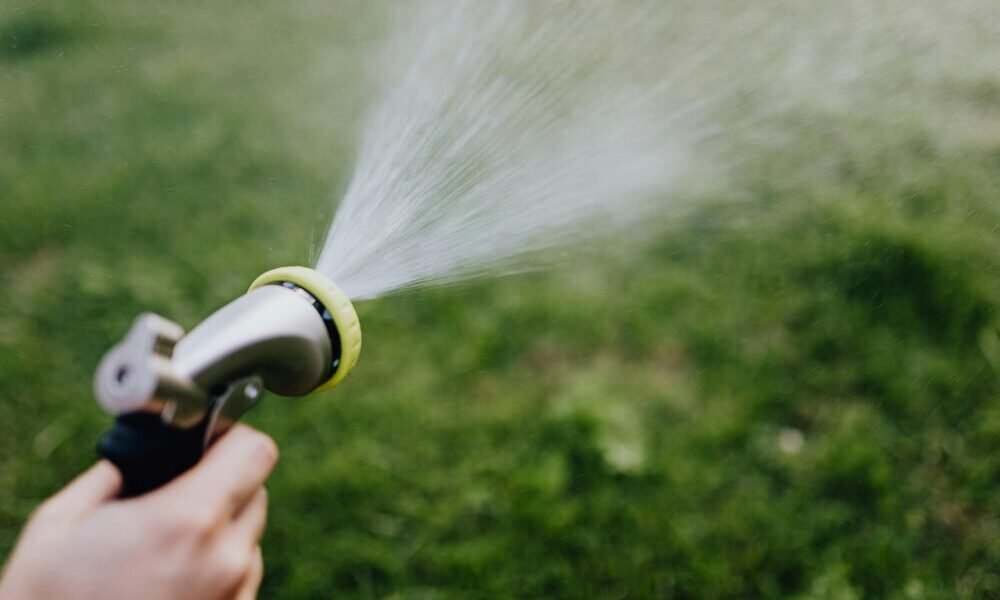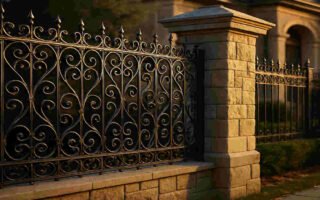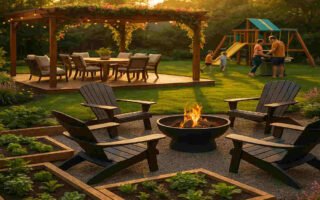A green, healthy lawn takes the right amount of water at the right time from a system that works properly. For most homeowners, that means depending on an automatic sprinkler system.
When that system isn’t working as it should, the signs often show up in the lawn itself. Brown patches, soggy spots, or uneven growth typically point to problems with your irrigation setup. Many of these issues develop quietly, causing overwatering in some areas and dry spots in others without you even realizing it.
To help you catch these problems early, here are six common sprinkler issues that might be quietly affecting your lawn. Spotting them early can save your grass, your time, and your water bill.
1. Uneven Water Distribution
One of the most common sprinkler issues is uneven water coverage. This occurs when some areas of the yard are soaked while others stay dry, leaving behind a patchwork of lush and stressed grass.
Clogged or misaligned sprinkler heads often cause this, or it may be due to poor spacing, blocked spray paths, or changes in plant growth around the heads. Left unchecked, these small disruptions can throw off your system’s balance and create a lawn that looks neglected.
If uneven watering keeps happening and quick fixes don’t solve it, it’s probably time to call in a professional. Look up irrigation sprinkler repair near me to connect with experts like BrightWater Irrigation & Lighting, who specialize in diagnosing and correcting these types of performance issues.
2. Low Water Pressure
If your sprinkler heads aren’t popping up fully or are only releasing a weak stream of water, low water pressure could be the reason. This issue can affect the entire system or just certain zones.
Several things can cause low pressure: a leak in the system, clogged pipes, or even problems with the main water supply. Sometimes, buildup inside the pipes can block water flow without you even noticing.
Low pressure means your lawn isn’t getting the water it needs, which can lead to dry spots and unhealthy grass. To fix this, start by inspecting visible parts of your system for leaks or blockages. If you don’t find anything obvious, it may be worth calling in a technician who can run a full pressure check and diagnose the issue.
3. Overwatering
While not watering enough can dry out your lawn, watering too much can be just as harmful. Overwatering leads to soggy soil, which creates the perfect environment for root rot, fungus, and even lawn pests.
This often happens when sprinkler systems are set to run too long or too frequently, especially when paired with rainy weather. Some systems don’t have rain sensors or functioning timers, so they keep running even when your lawn doesn’t need more water.
Signs of overwatering include a spongy feel underfoot, standing water, and grass that looks limp or pale. The fix? Adjust your watering schedule based on the season and weather. Consider installing or checking your rain sensor to ensure it’s working properly. You might also want to water in shorter, more frequent bursts instead of one long session.
4. Broken or Leaking Sprinkler Heads
Broken or leaking sprinkler heads are another common problem that can cause more damage than you might think. Sometimes, they get cracked by lawnmowers or foot traffic. Other times, wear and tear from years of use causes them to leak or stop functioning altogether.
You might see water pooling around a certain sprinkler or notice that one head keeps gushing water even when the system is off. These leaks can waste a lot of water, drive up your utility bill, and drown sections of your lawn.
Replacing a broken head is usually a straightforward fix, but it’s important to catch the problem early. Make it a habit to walk around your yard and check each sprinkler every few weeks, especially during the high-use summer months.
5. Sprinklers Watering Non-Lawn Areas
Have you ever seen your sprinklers watering your driveway, the sidewalk, or even your house? If so, you’re not alone. Misaligned sprinkler heads are a common issue that wastes water and leaves parts of your lawn under-watered.
This can happen over time as heads get bumped out of place by people, pets, or lawn equipment. It could also be caused by poor planning when the system was first installed.
Not only does this kind of watering waste money, but it can also cause hard surfaces to become slippery or damaged from constant exposure to water. Meanwhile, your lawn suffers because it’s not getting the water it needs.
Fixing this usually just means adjusting the spray direction or swapping out the sprinkler head for one with better coverage control. It’s a small fix that can make a big difference.
6. Sprinkler Heads Not Popping Up
Pop-up sprinkler heads are meant to rise when it’s time to water and then go back down when they’re done. But sometimes they get stuck. If a sprinkler head doesn’t pop up, it can’t do its job—and that means part of your lawn gets skipped.
Heads might get stuck because of dirt or debris around the base. In some cases, it’s a water pressure issue. If the pressure is too low, the heads won’t lift all the way up.
The fix might be as simple as cleaning the head or adjusting the pressure. But if the problem keeps coming back, you might need to replace the riser or the head entirely. Keeping the area around each head clear can also help prevent future sticking.
Your sprinkler system plays a big role in how your lawn looks and feels. When everything is working properly, you probably don’t give it much thought. But when problems pop up—and they often do—it can quickly lead to dead spots, soggy areas, or sky-high water bills.
The good news is that most sprinkler issues are easy to spot and fix if you pay attention. Simple habits like checking your system every couple of weeks, watching for signs of uneven watering, and cleaning out nozzles can prevent small problems from becoming expensive repairs.
If something seems off and you’re not sure what to do, don’t wait too long to take action. Whether it’s a broken head, a timer glitch, or water spraying the sidewalk instead of the grass, early fixes can save your lawn and your wallet.
You may also read (budget driven planning for the ideal backyard renovation).




